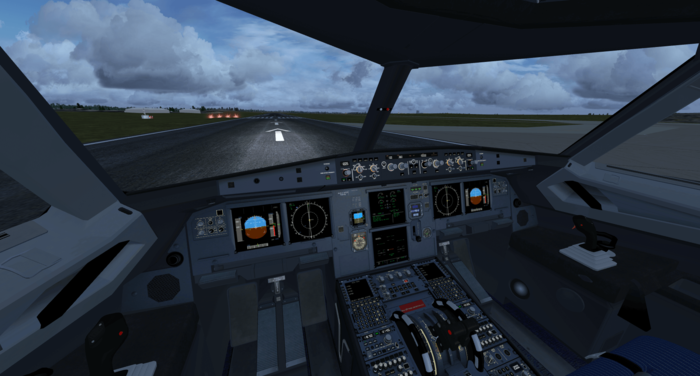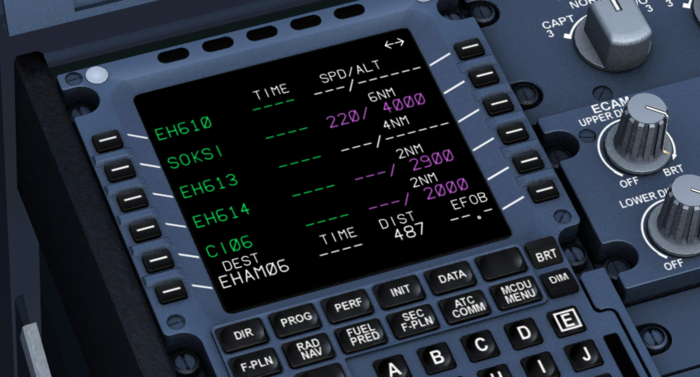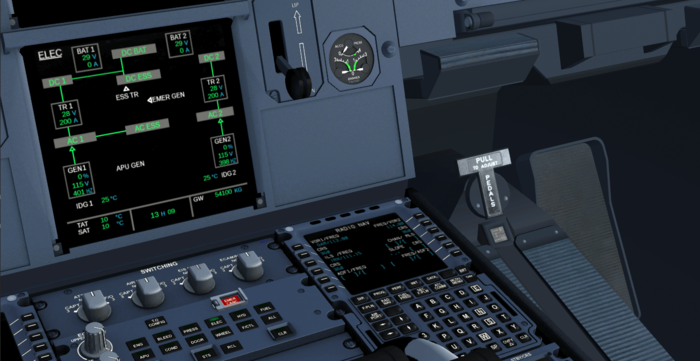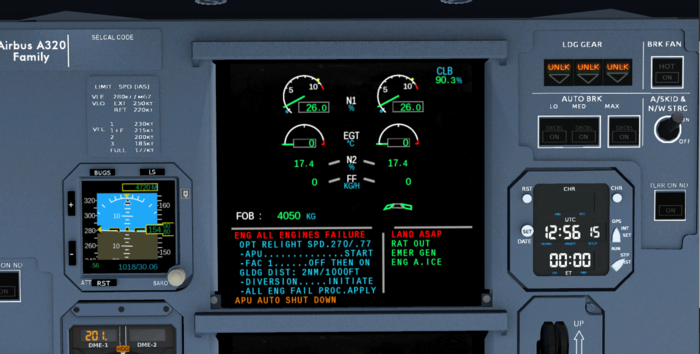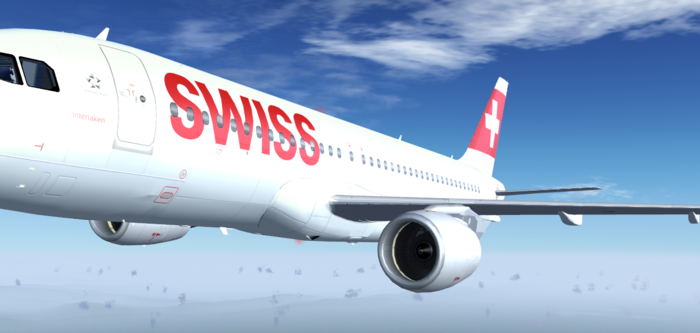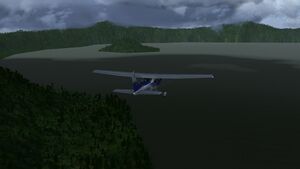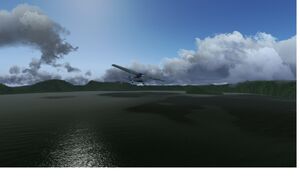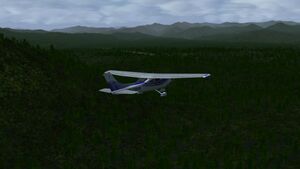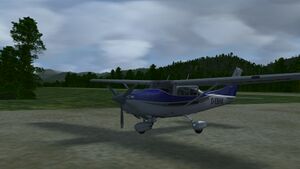2020 LTS Keflavik news post draft
This is a draft post where descriptions of improvements since FG 2018.3 LTS to aircraft and other features by developers is collected - along with suitable screenshots.
These descriptions of improvements are planned to be released as regular news updates on the flightgear.org homepage. The news updates are planned to be released a week apart.
If you are a developer, you can just hit the edit button, create a section for an aircraft or feature, and type or edit a description. The new version of the wiki is incredibly easy to use, like using a word processor.
The most important things are the points about what to write, and some screenshots. Don't worry if wording or English is not perfect, it can be adjusted later. URLs to screenshots can simply be pasted if you don't know how to upload, along with a note giving CC-BY-SA-4.0 permission.
James has said he is willing to review and update the homepage if material is submitted to the wiki, or otherwise handed over to him. The first few articles have already been published.
Screenshot sources:
- Feel free to upload to the wiki, or just add the imgur link with a note saying permission is given for use under CC-BY-SA-4.0 for now.
- Some of these screenshots may end up being used on flightsim.com (the editor has apparently reached out about trying to cover the last 2-3 years of FG)
- High settings screenshot collection - The Screenshots at high settings category is a collection of existing /vaguely/ high settings screenshots made since 2017 already available on the wiki.
- Forum SOTM section - There may be some suitable screenshots in the SOTM section of the forum that have not been uploaded to the wiki yet.
- Taking new screenshots - It's possible to pause and turn up settings, if you normally have settings lower on an older laptop or similar.
News post drafts
Published news posts
Archive page: Release post, Iceland Tour post
FlightGear release posts
2020.3.7/8 OSM2City world-build
If screenshots are needed for OSM2City, and FG isn't waiting until a better performing version before announcing:
- Manhattan area (maybe problematic if people recognise it and try Manhattan first, as it's the worst case performance and large download: Manhattan (by StuartC), 2nd screenshot: Manhattan includes some WiP compositor screenshots with shadows
- Madrid by StuartC, 2nd screenshot: LOWI
- Netherlands west coast (random point) by Erik
- California (KSFO) regional improvements by Gilberto (with OSM2City) that are now actually active after a bug fix.
- Europe , 1 , 2 agriculture improvements - Rolling agricultural lands stretching away to the horizon in southern Europe
- Madrid during a hazy dawn with a simulation of uneven ground fog. OSM2City
List of performance tips and expectation management points from the newsletter - is available here in the 1st rollout info article and could be linked if suitable.
Aircraft posts
Developers please add descriptions & screenshots here. These should be for a dedicated newspost with a bunch of high settings screenshots.
It's possible to collect a bunch of aircraft with smaller improvements in one post - for instance if there are high settings screenshots available, making it convenient.
You can mention an entry is <ready> (or use insert->template->type ready to choose the ready template) if there's nothing more to be added and screenshots are also linked.
Flightgear 2020.3 Changelog - lot of possible posts.
A320
New to the 2020.3 release is an updated and improved version of the Airbus A320. First flown in 1987, the A320 is the second most produced airliner ever, with over 9,500 built to date. It was one of the first airliners to use fully digital flight controls / fly by wire, and a fully glass cockpit.
This aircraft has been recreated by a team of developers over many years, and is now distributed in FGAddon. Among other features, it has a working MCDU (Multi-Function Control Display Unit), which makes it one of the first aircraft in FGAddon to allow proper operation of a modern airliner's avionics. It also has some unique features such as allowing pilots to fetch their flight plans from Simbrief, or to request weather and digital ATIS in the MCDU.
In terms of systems, it is one of the most detailed aircraft in FlightGear, as it accurately represents the behaviours of the real Airbus; for instance, each switch, valve, and actuator has its own power supply, and will only operate if it is powered. Thousands of logic diagrams and system schematics have been used to accurately represent the Airbus and to allow for some limited failure modelling. Some indication of the detail might be given by looking at the ELEC page on the System Display, and observing how the frequency of the generators changes as you adjust engine power.
The A320 also features a ECAM system which monitors the systems of the aircraft, presents failures to the crew, and suggests steps to remedy them. Most of the important failures have their own checklist, for instance the ALL ENG FAIL checklist shown here.
In the future the A320 will be receiving a fantastic new 3D model and a new flight dynamics package -- keep an eye out for the update!
Space Shuttle
[Screenshot of STS 1 Launch with White Cumulus in background]
Space Shuttle has been in development for almost 5 years now, and "she" is still under work in progress to make her always more realistic and close to the real thing. A lot of official documentations, and performance manuals are still used to benchmark and upgrade what was already very nicely done. Last Shutte Stable release was end of the year 2019, next one might be for the end of the present year.
Meanwhile, the dev branch is fully usable and will be compatible with the 2020.3, with some really nice improvements.
However, it does require already a good knowledge of how the Shuttle works in the stable branch as many features and troubleshooting procedures are not detailled yet in the FG Shuttle manual.
Some of the new things that you can find in that branch are detailled below. For a more extensive review and explanations of the differents points below, you can have a look there: Space Shuttle-Release and Dev Change Log
- Brand new Florida area thanks to Legoboyvdlp: Florida CustomScenery
The "official" launch area of the Shuttle had a really nice visual upgrade. When looking from an exterior point of view, immersion is greatly improved.
[Global view of the Cape at Sunrise]
- Hubble Rendez Vous // Payload Grapple and Retrieval
Until now, it was already possible to perform some rendez vous to ISS, following close to real procedures. It is now doable towards other objects, especially Hubble. A very rewarding challenge, as it pushes the Shuttle operations to their limits propellant wise.
Payload can be grappled again after being released from the payload bay, a game of patience which in real took hours with several detailled and time consuming procedures.
- Eileen Copilot (Famous Shuttle Commander)
Eileen is a kind of IA here now to assist us in Station Keeping task while working on RMS operations or messing around. She is particularly useful when working on a satelite to grapple.
[CoPilot Assistance for Station Keeping]
- Performance improvements on SSME and Launch Autopilot
Space Shuttle Main Engine thrust,ISP , and consumption is now within a percent of the real datas. The mixture ratio in real was around 6, and it is what we observe in the sim (6 times more liquid Oxygen burnt than liquid Hydrogen). Hence, Main Engine Cut Off ( MECO) time is matching real one. Plus, the propellant remaining at MECO, called the Final Performance Reserve (FPR) is now within a percent ( 15000 pounds). It makes launch with high payload into a high inclination Orbit (towards ISS typically) really interesting and limitating performance wise, like in real.
An interesting read about that FPR, written by a former Shuttle Flight Controller: Wayne Hale: The key is Mixture Ratio
You can find below some in sim datas compared to real one coming from the Shuttle Crew Operations Manual (SCOM).
[Velocity Vs Time in Sim [Velocity Vs Time in real]
[Altitude Vs Time in Sim] [Altitude vs Time in Real]
- New systems
Helium Subsytem for the Space Shuttle Main Engines
The Space Shuttle is composed of a tremendous amount of valves and feedlines, going from the External Tank (ET) to the SSME to bring the liquid propellant into the Main Propulsion System (MPS). A lot of those valves are pneumatically actuated, by an inactive gas, Helium.
It allows also to create some inert vacuum in some areas where liquid Hydrogen and liquid Oxygen could be in contact, in the Oxidizer part of each Engines. Finally, it is used post MECO to purge the feedlines with remaining propellants ( 5000 pounds ! ). That system is highly complicated and interesting, with some capacities of Helium crossfeed between engines in case of leak.
More informations there:Main Propulsion System Helium Subsystem
Caution and Warning System (CWS) improvements
The most visible improvement here is a closer to real fault message logic, announced when a parameter is going high or low. A good example is the electrical buses, with low/high voltage somewhere due to a short circuit. CWS is quite complex in the Shuttle. A lof of different kinds of alarms, depending of the seriousness of the failure. Plus it depends which software is loaded in the computer, the primary one or the fascinating Backup Flight Controller, ie. last level of redundance in case of major computer bug.
A good but dense guide about that system might be found either in the SCOM or there: Caution and Warning System guide
The main fault display page
A quick glance on how it can look with a "simple" shortcut in one of the AC buses. It triggers quite some alarms and messed up a bit everything. Better have a good knowledge of what everyhing mean for a good troubleshooting
Electric short circuit fault messages
- Better Plasma during Entry
While hitting the atmosphere at Mach 25, a orange-ish Plasma glow can be observed around the Shuttle, causing black out and long minutes of sweating.
Hard to observe in real, we can have a look on it here and there.
Plasma during the hottest part of the entry, when the Shuttle dives into the atmosphere at Mach 24 and 250 kfeetish. Thermal constraint is there the hard boundary to stay away from.
Plasma during entry with Aurora in the background
Later in the entry ( below Mach 15), the glow starts to vanish but the belly shield is still under heavy thermal stress; Dark Maul style.
- Interior visual improvements for Glass Cockpit displays (Font / fidelity with the real thing)
Most of the work is summed up here: Space Shuttle-Display adjustments (PFD,HUD,MEDS,DPS...). Already a lot of those changes are available on the Space Shuttle dev Branch.
The main thing here is to iron the visible part of the iceberg by fine tunning the display realism visually wise. As with the other parts of the Shuttle dev, it is based on real documentations (mainly the Data Processing System Dictionnary).
By the end of the year, a new layer of immersion should be available with the completion of that interior display rework.
Shuttle Cockpit ready for a night launch.
Orbit reached, time for another batch of softwares and to raise the Perigee
Some Shuttle screenshots gallery to finish the update.
STS 1 on the pad, waiting fot the D day
Almost at the end of the first two minutes, the Solid Rocket Boosters ( SRB's) separation is closed.
A bit of rest for the crew, after a nominal Orbit Insertion
Back on Earth into a Stormy Weather...
...or with a golden sun
C172p
Add more here
Feature posts
FG1000
Earthview
Earthview, FlightGear's orbital renderer, is a fantastic piece of code that allows us to transition from an Aviation Sim towards a Space Sim.
You can try out the Space Shuttle (wiki), strap in for an unforgettable ride aboard the Vostok (wiki), or take a suborbital cruise aboard the X-15. The UFO can do quick visits. Supersonic jets with light load-outs can also fly parabolas whose peaks of 17km+ rise above much of the atmosphere and up into the stratosphere.
Already developed for some years now, EarthView had a nice upgrade this year. More information is available on the Earthview wiki, or the forum thread Earthview FG forum
Amongst others: better normal maps (for depth perception), bugs fixed, up to 16K textures depending on the season: Earthview world and clouds tiles - James has requested a bit more info/text for a post - see mailing list, maybe some text to go with the screenshots about what is visible will help.
Some shots below from this dream-catcher tool:
[Sunset and diffraction ] [Black knight UFO Shuttle] [500Nm above the World] [South Pole and lighting game] [Good night World] [California Fly By] [Lonely External Tank] [Ready for Orbital Operations Commander]
Add more here...
Trip experience posts
Searching Wizard Island trip
[The explanations in italics might be best made slightly greyer or something to distinguish them from the main text..]
Wow, what a ride
I'm glad I survived this.... but read yourself:
I just tried the Searching Wizard Island trip from the suggested flights page. I used live METAR with the Advanced Weather engine. [See past posts on Advanced Weather (2012), rendering of weather (2013), and atmospheric scattering (2014) for some details of FlightGear's terrain driven weather simulation and rendering of visual cues] The weather was a little turbulent at times with lots of clouds forming at about 8000 ft, but otherwise fine and only slow winds. A little chilly maybe, but more to that soon.
The entire trip took about 50 minutes. After the pre-flight inspection, I started with my Cessna 182S and all was nice. The woods are really impressive and that's really a nice (but remote) place.
Following the radial was easy and soon I faced some mountains, behind the beautiful lake with the island therein.
Temperature was about freezing level and all systems were good. I took a round around the crater but then suddenly I noticed my airspeed doing weird things. And I lost some altitude, despite being sure that I was nicely leveled and trimmed...
Whats going on? Why are my wings so white???
Suddenly I had a really serious problem! Obviously the moisture above the water did create icing on my plane and I slowly lost airspeed. The Pitot tube was obviously frozen, and I supposed also that the static ports where frozen.
[The Pitot tube is used to determine the speed of the aircraft relative to the (moving) air - the airspeed. The tube opening faces the oncoming air, and the pressure caused by the air ramming in to the tube is measured. The faster the air flow, the higher the pressure. The denser the air, the higher the pressure. Imagine being dipped in a stream of flowing water - the faster the water flow, the higher the force (and the higher the pressure - that is, more force per unit area depending on how large you are ). If the water was replaced by something denser like lava or lead, then the pressure will increase.]
[The static port(s) are used in trying to determine altitude, and how fast an aircraft is ascending or descending (vertical speed). Static ports are openings that are connected to tubes that 'sample' the air pressure. Unlike the Pitot tube, static ports' openings don't face the oncoming air head-on to avoid pressure from ramming - although static ports on different sides of aircraft are used to try to reduce the effect of ramming air when there are winds blowing across the aircraft, or the aircraft is experiencing side-slip. Since pressure is being used, the values for altitude and vertical speed vary depending on weather - the pressure at the altitude of the ground beneath a craft can be different on different days. The way the pressure changes with altitude above ground can also change - including as a result of water in the atmosphere changing state.]
So while trying to maintain altitude and regain speed I readjusted the motor to max power, which helped me to at least not drop into the water; and I pulled the alt-static port knob to regain static pressure, and some time after that the Airspeed Indicator (ASI), Altimeter and Vertical-Speed Indicator (VSI) got back to life.
As I somewhat re-established control of the flight, I realized that I will probably not get enough lift to cross the ridges surrounding the crater lake. Weather data suggested that, at the lake, there should be some wind coming from 330, so I figured that I may try to use ridge lift at the southwest side. Luckily that worked and I was able to gain about 300 ft per minute, and I figured that I will get enough altitude to cross the lower ridges in the northeast.
Then another problem: A routine check of the gauges revealed that my Cylinder Head Temperature (CHT) is over limits due to the air intake clogged with ice. I promptly reduced engine power and added lots of mixture [more fuel into the fuel-air mixture than is normally burned] in order to try to cool the cylinders down. That worked without engine failure... Phew!
Finally crossing the ridge made me sigh inside and I hoped that the remainder of the route will bring me into warmer air - the vague trip description in the wiki said the target airport is about 3300 ft, so I had plenty of room to go down. Consequently I tried to stay near the ground - but not too low! And I constantly monitored the CHT gauge which was always near 500°F (260°C) for the rest of the trip - that's at the red mark.
This was really a gamble, because I did not know the route and the terrain - I just hoped that there will not be another ridge, but I was disappointed.
So I tried to get enough power and established a small ascent - just enough to cross the tree-line at the lowest part of the ridge. My backup plan was to just slowly fly circles until I get enough height, but I made it at the first attempt (150 ft above ground level [AGL]...).
From that moment on I just followed the valley down. Last time I noticed I was about 61 nautical miles (NM) (70 miles or 113 km) away from the Klamath Falls VORTAC, but shortly before crossing the ridge the signal went unstable and ceased.
I really needed the airport NOW. What did I know? I knew that the airfield is a grass strip and should be about 71 NM away from the VORTAC (thus about 10 NM from my position), and I flew about 80-90 knots (NM per hour), giving me roughly 5-8 minutes until I should be in the vicinity of the field. I also knew that I had wood everywhere, so I really need to take care not to get too close to the ground. I also knew the rough direction of the target since I tried to follow the radial closely until the point when the signal vanished - my conclusion was that the airfield must be somewhere in front of me, before the next far mountains, but nothing to see yet.
I kept my eyes simultaneously on the gauges to not overheat, or get a problem with the flight parameters, and also on the surroundings. Woods, everywhere woods. Suddenly (the 10 minutes were long over, at least in my feeling [clock told otherwise, though]) behind a hill - what is that? That looks like a clearing!? It is a clearing. Is that a road? Hmm, please let it be the airfield! Yes, its probably an airfield!!!! And - quickly recheck - the orientation looks good also! That must be it!
I corrected my course in order to fly nearly over the field, to be able to see the windsock. That was a little gusty, but no strong winds, and nearly aligned with the runway, so at least no crosswind landing in this circumstances.
The approach was smooth and then I was able to land - its not that easy with the tall trees (and the C182S' damage by trees simulation) right in front of the runway, but it is really long enough for the C182S.
Finally I made it out alive.... Cool what FlightGear can surprise you with nowadays. It was about 3°C there and the snow already sublimated and melted a little. Ah, B.T.W.: the Wizard was not on the island, or I didn't find him.
FlightGear Project news posts
After release: Current release philosophy
Currently placeholder text. For publishing a longer time after the improvement posts.
As of 2018.3 LTS, Flightgear has transitioned two release types:
- Long Term Stable (LTS) releases suitable for most users with a new featured airport
- Development preview releases
There will be point releases containing bugfixes and minor updates for both release types. For example, 2018.3.6 was the 6th bugfix point release for the 2018.3 LTS - it was released in August 2020.
LTS releases will have bugfixes ported and the build maintained for longer. Development preview builds will be less stable, receive less testing, and are a bit more of a construction site where large structural changes are made to lay the foundations for the future. Some aircraft may not work on development releases. Power users can run multiple installs of Flightgear in parallel.
There are minor improvements planned to the launcher UI in 2020.3 point releases. There are a lot of big changes already underway and planned after 2020.3 LTS, so if you are curious keep an eye on future development previews leading to the next LTS.
After release: Project status
More appropriate for another post a while after the release. This should provide a situation report for people that may be interested in contributing.
Items: WS 3.0, Compositor, OSM2City world build/tech improvements, in-sim UI replacement work, infrastructure for regular world builds, Australia shapefile revamp etc. etc.
